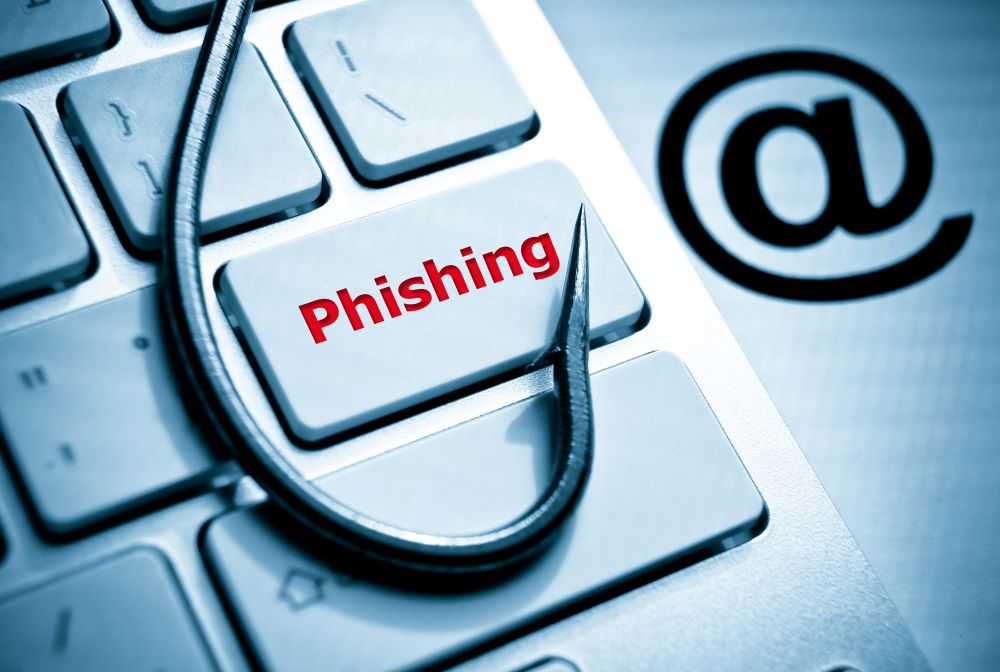With each passing year, cybersecurity threats get more complex. Phishing attacks become more sophisticated. This presents a problem for businesses trying to decide how to best protect themselves. If your business isn’t outsourcing its IT and cybersecurity management to a reliable third party, you’ll need to develop an anti-phishing strategy in house.
Rather than waiting until it’s too late to evaluate your anti-phishing strategy and take preventative action, consider the following suggestions to help you keep your business and employees safe from online threats.
Understanding The Problem
The most common concern for small and medium-size business owners is the threat of an employee at any level unknowingly clicking on a phishing email. Phishing attackers have gotten very good at mimicking the look, feel, and cadence of a business’s emails, instant messages, social media posts, etc.
Employees who are not aware of the risks and who are not trained to be vigilant for these types of attacks can easily be tricked into a phishing scam.
Developing An Anti-Phishing Strategy
To reduce (and hopefully eliminate) your business’s vulnerability to phishing attacks, you’ll need to develop an actionable strategy.
For most SMBs, the strategy we recommend is comprised of two parts:
1) Reduce the number of spam emails employees receive. The less spam and malicious email that makes it into your employees’ inboxes, the fewer chances they’ll click on a malicious email link.
2) Increase employee awareness and detection of malicious emails. By increasing awareness of what phishing emails are and how to detect them, you’re taking a proactive measure to combat the threat before it even arrives.
Keep in mind that your users are your first line of defense against cyber attacks and phishing scams. Giving them the tools and knowledge they need is a big step in the right direction toward preventing a security breach.
This video takes a humorous look at differing user opinions as to whether or not an email is malicious:
Deploying Your Anti-Phishing Tactics
How can you reduce the number of incoming spam emails and increase employee awareness of phishing attacks? There are several tactics you can deploy in your business to meet these strategic goals. For example:
Migrate From ISP Email To A More Secure Platform
If you’re using your internet service provider’s native email platform, consider migrating to a solution that has better spam and fraud prevention tools built-in. Google Workspace, for example, has strong anti-phishing and fraud detection built-in for every user.
Start An Anti-Phishing Training Program
The best way to increase employee awareness and detection of cyber threats is to hold regular training sessions. Giving your employees a chance to ask questions, review examples, and cooperatively develop solutions will empower them. The more information your users have, the better.
Work With An Experienced Managed Services Provider
As an additional layer of protection, consider working with an experienced IT services provider that can help protect your business. MSPs offer a range of services and software that are specifically tailored to SMBs and that help them reduce security risks.
Back Up Your Cloud Data
Cloud vendors like Google and Microsoft are not responsible for backing up your data. You are responsible. Look into a cloud backup solution.
Doing Nothing Is Not An Option
Many small and mid-sized businesses wait until it’s too late to implement an anti-phishing and cyber attack prevention strategy. Worse still, a majority of cyber-attacks are targeted at SMBs and not at enterprises—because SMBs are less likely to have strong security measures in place.
Regardless of whether or not you choose to work with an outside IT services provider, doing nothing at all and just hoping for the best is not an option anymore. Set aside some time to review your current security measures and decide whether or not you need to implement a more robust anti-phishing and threat prevention program.


